If you go down to the woods today, you’re sure of a sweet-smelling surprise! Robin Taylor goes in search of wild garlic in Somerset’s ancient woodlands.
Now that spring has finally sprung, the county’s grass verges and woodland floors are alive with wild garlic. Over the next few weeks, those of us out walking will be certain to spot its delicate white flowers bobbing above the distinctive green, spear-shaped leaves. Not to mention catching that unmistakable aroma wafting on the breeze!
Wild garlic, or ramson, has myriad uses. It can be added to salads, soups, pestos and even used to top pizzas. Its unique flavour adds a grassy, seasonal punch to a variety of springtime dishes. Eaten raw, the leaves have a delicious, piquant zing. When cooked, they mellow considerably while still retaining their distinctive garlic flavours. The flowers are also edible, and a handful makes a beautiful garnish on a fresh garden salad.
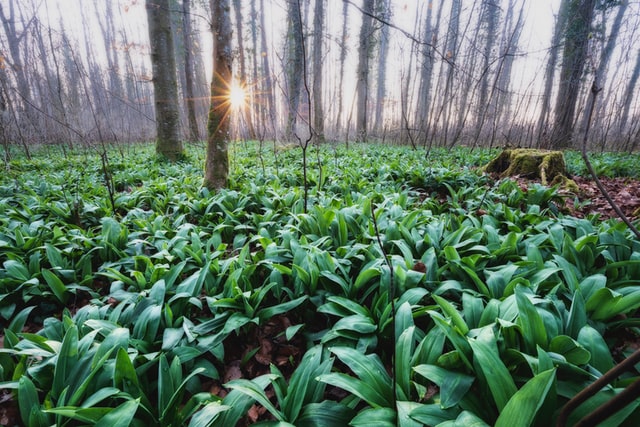
Medicinal Qualities
Wild garlic is also prized for its health benefits. The leaves contain vitamins A and C as well as calcium, phosphorus and iron. Over the years, people have used it to treat stomach cramps, toothaches and, during the 1918 flu pandemic, it was thought that carrying the plant in your pocket would protect you from infection.
An old 17-century proverb even goes as far as to suggest that it might be as effective at ‘keeping the doctor away’ as the famous apple:
‘Eat leeks in Lide March and ramsins in May
And all the year after physsitians may play!’
CN French, A Countryman’s Book
Where To Find Wild Garlic
Wild garlic thrives in damp, shady ground and will grow in abundance given the right conditions. It is often found near a water source and flourishes on riverbanks and the edges of streams.
Wild garlic spends most of the year as a bulb underground, eventually emerging to flower and leaf from April onwards. Flowering in the early part of the year enables the plants to flourish in the spring sunshine that reaches the forest floor before the overhead canopy becomes too dense. Millions of bulbs can flower in a single wood, creating the starry, alabaster carpets you regularly come across when out walking.
The best way to find it is to simply ‘follow your nose’! On a warm Spring day, you are likely to smell the garlic long before you stumble across it.
The plant can be identified by its rich green, lance-shaped leaves (know as lanceolate) and its clusters of white flowers borne on straight green stems.
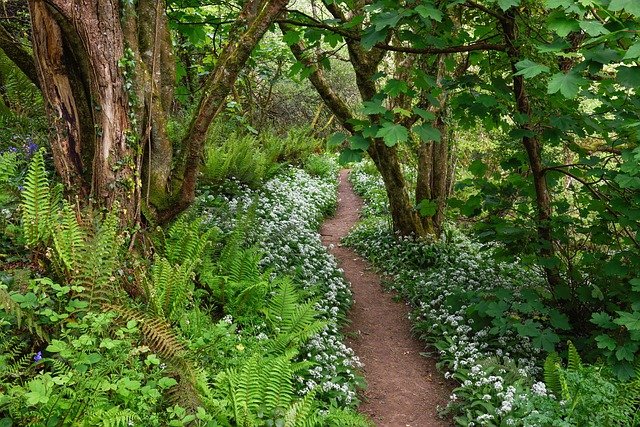
In springtime, the Somerset countryside is teeming with wild garlic. Here are a couple of my favourite foraging spots:
Park Wood, Wells
Situated a short walk from The Bishop’s Palace in Wells, Park Wood is a great place to find wild garlic. It thrives in the damp, shady conditions and is in plentiful supply along the old Strawberry Line trackbed.
Mells riverside
The riverside walk from Mells to Frome is another super location to go foraging. With bright white wood anemones clustering in the verges and the river twinkling in the Spring sunshine, I can’t think of a prettier place to do it!
Foraging has one cardinal rule: If you’re not 100% sure of what it is, don’t eat it!
Beware of imitations!
Some woodland plants can be mistaken for wild garlic. The most common of these lookalikes is Lily of the Valley, which is highly poisonous. Once the two plants have flowered, they are easy to distinguish from each other. Instead of the tiny starlike flowers found on wild garlic, Lily of the Valley has very distinctive bell-shaped, drooping flowers.
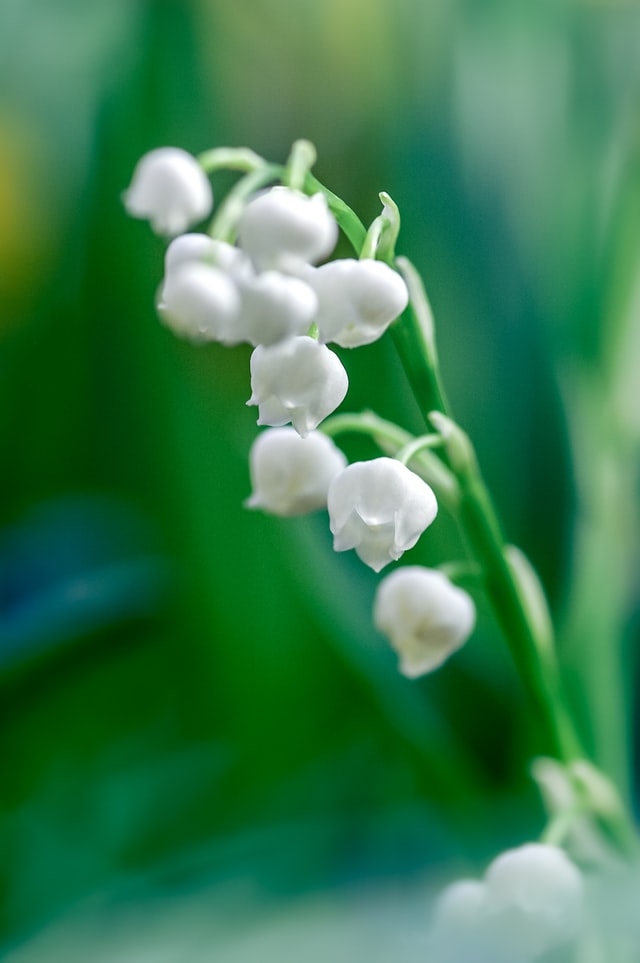
However, before they flower, the leaves of these two plants look very similar. One good way to tell them apart is to check whether the stem has multiple leaves coming off it. If it does – leave it alone! Wild garlic leaves always form at the base of the plant and grow individually.
Wild garlic can also be confused with another poisonous plant, Lords and Ladies. Lords and Ladies appear around the same time of year as wild garlic and can often be found growing amongst it. Whilst its leaves are visibly different – with net-like veins rather than the smooth parallel lines of the wild garlic leaf – an absent-minded forager could easily collect it by accident.
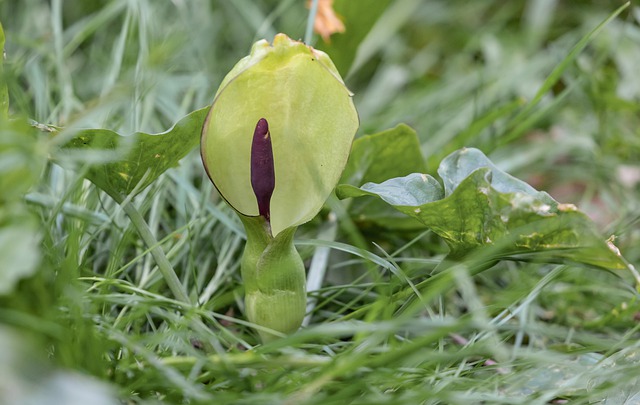
The best way to make sure that you have found wild garlic is to rub the leaves between your fingers and take a good sniff. There’s no mistaking that smell!
The Do’s and Don’ts of Foraging For Wild Garlic
If you are tempted to try foraging, then there are a few essential things to remember:
Only pick where plants are plentiful:
Be a sustainable forager and only take what you need. Leave plenty for the wildlife. Badgers and squirrels eat wild garlic bulbs, and the flowers attract pollinating insects, such as butterflies and hoverflies.
Minimise damage
Take care not to trample across the areas where you are collecting. Pick individual leaves precisely and avoid doing damage to the surrounding plants.
The Law
Generally, if wild garlic is within reach of a public right of way and you don’t have to trespass to get it, it’s OK to pick it. However, make sure always to read the foraging rules specific to your local green spaces before you help yourself.
The Wildlife and Countryside Act of 1981 prohibits the uprooting of a complete plant without permission from the landowner or occupier. Ensure that you only pick a wild garlic plant’s leaves and flowers and leave the roots undisturbed.
Wild Garlic Pesto
Making this pesto couldn’t be easier. Simply combine the ingredients in a food processor (or in a traditional pestle and mortar) and blend them to your preferred consistency. I like my pesto a little coarser, with a nutty, grainy finish, but many chose to blend the ingredients into a puree. Either way, it’s delicious!
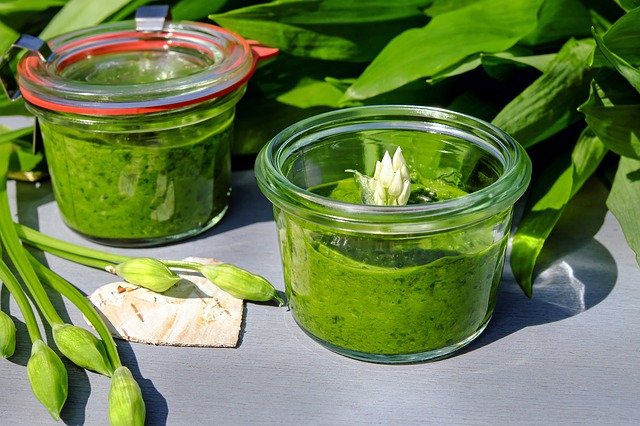
100g Washed wild garlic leaves.
50g Toasted pine nuts
50g Parmesan
100ml good quality olive oil
Salt, pepper and lemon juice (to taste)
